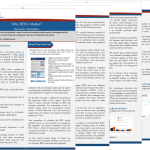The Lead Left – A Special Report: Why BDCs Matter
Beginning in June 2014 The Lead Left published a series of articles discussing the relative merits of investing in middle market senior debt and their broadly syndicated counterparts. This report consolidates those articles: What is a BDC? The BDC Structure BDCs and Leveraged Loans BDCs and the Investor








